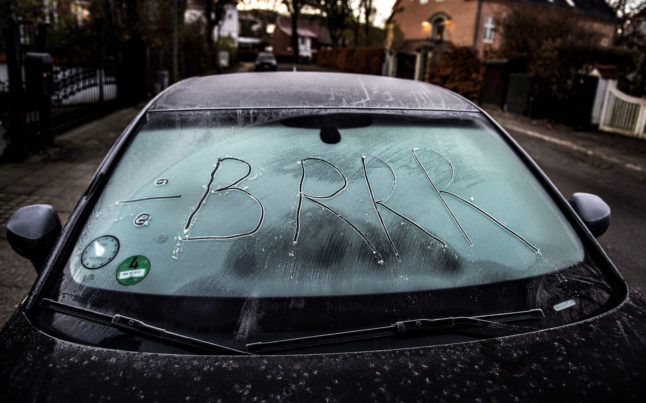Although winter tyres are not a legal requirement in Denmark, they are recommended by FDM, the Danish membership organisation for motorists.
Neighbouring Sweden, Norway and Germany – where many Danish residents head on skiing and other holidays during the colder months – all have rules requiring winter tyres.
What are winter tyres?
Winter tyres should be able to cope with icy, wintery conditions including snowy and wet roads. The tyres must also comply with traffic laws relating to tread depth.
Tyres which qualify as winter tyres are marked “M + S”, which stands for “Mud and Snow” and have a mountain and snowflake symbol.
The legal requirement for tread depth is 1.6 millimetres – the same as for summer tyres. However, once your tread is under 3 millimetres, you will find workshops recommend you change them, as does FDM. That is because their grip will be significantly worse than that of a new tyre, which will have at least 8 millimetres of tread.
While Danish law does not require you to use winter tyres (but it is recommended), you do have to have matching tyre types. So it is illegal to, for example, keep normal tyres on the front of your car and just change the rear tyres in the winter.
Winter tyres grip the roads more aggressively than summer tyres, which can normally be recognised by the 3-4 parallel grooves that run through the tread. These are absent on winter tyres, which have blocky treads. The rubber compound used in winter tyres is designed to maintain its properties at low temperatures.
Summer (also known as ‘normal’) tyres can need up to twice as long to brake in freezing winter conditions as winter tyres. However, you should be aware that winter tyres can need a slightly longer braking distance than normal tyres in dry conditions. The two types perform comparably on wet roads.
When should I change from normal to winter tyres?
It is common in Denmark to hear the ‘autumn holiday’ or efterårsferie in the second half of October – the week we are currently in at the time of writing – referred to as the ideal time to switch to winter tyres.
While this week might be ideal for many people to change their tyres because they have time off work, thermometers are probably a better guide than the calendar. Tyre makers generally recommend switching to winter tyres when the temperature falls to under 7 degrees Celsius.
FDM writes on its website that winter tyres should always be used on what it defines as winter road conditions: ice, snow and wet winter weather. Summer tyres should not be used in these conditions.
Conversely, most people switch back to summer tyres at Easter, although this depends a little on when Easter falls in a given year.
If you get your tyres changed by a local garage or mechanic (many motorists in Denmark make use of ‘tyre hotels’ to store their tyres out of season), it’s worth doing this in good time – the arrival of the first bout of cold winter weather can often create queues at tyre companies.
It’s also fine to change your tyres yourself, provided your winter set is on its own set of rims and you’re confident using a jack and wrench. There are plenty of how-to guides in English and Danish for this online, but make sure you have the correct tools and always put safety first. If in doubt, go to a professional.



 Please whitelist us to continue reading.
Please whitelist us to continue reading.
Is it not more sensible to make change to winter tyres based on temperature? I understand that winter tyres are recommended, and I fit mine, when the temperature stays below 7 deg C.